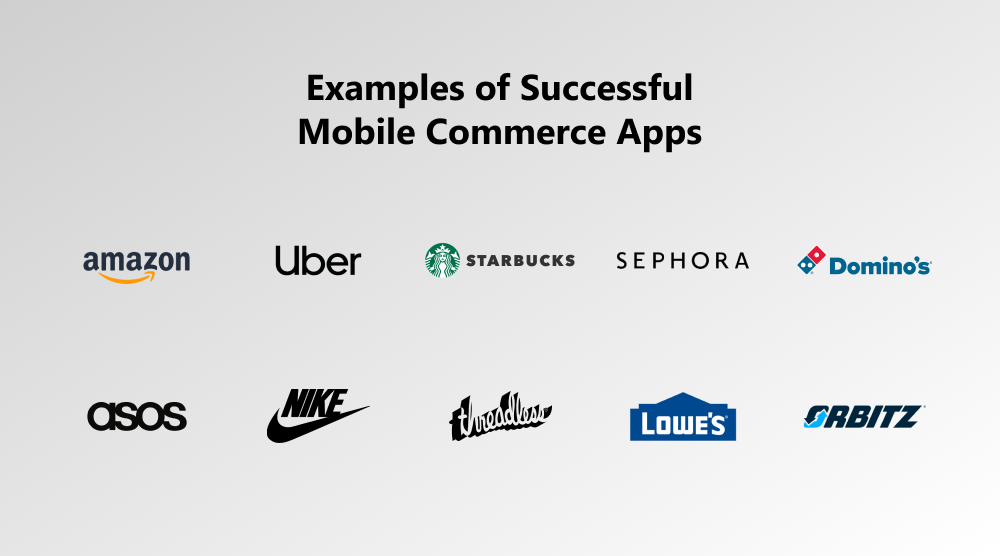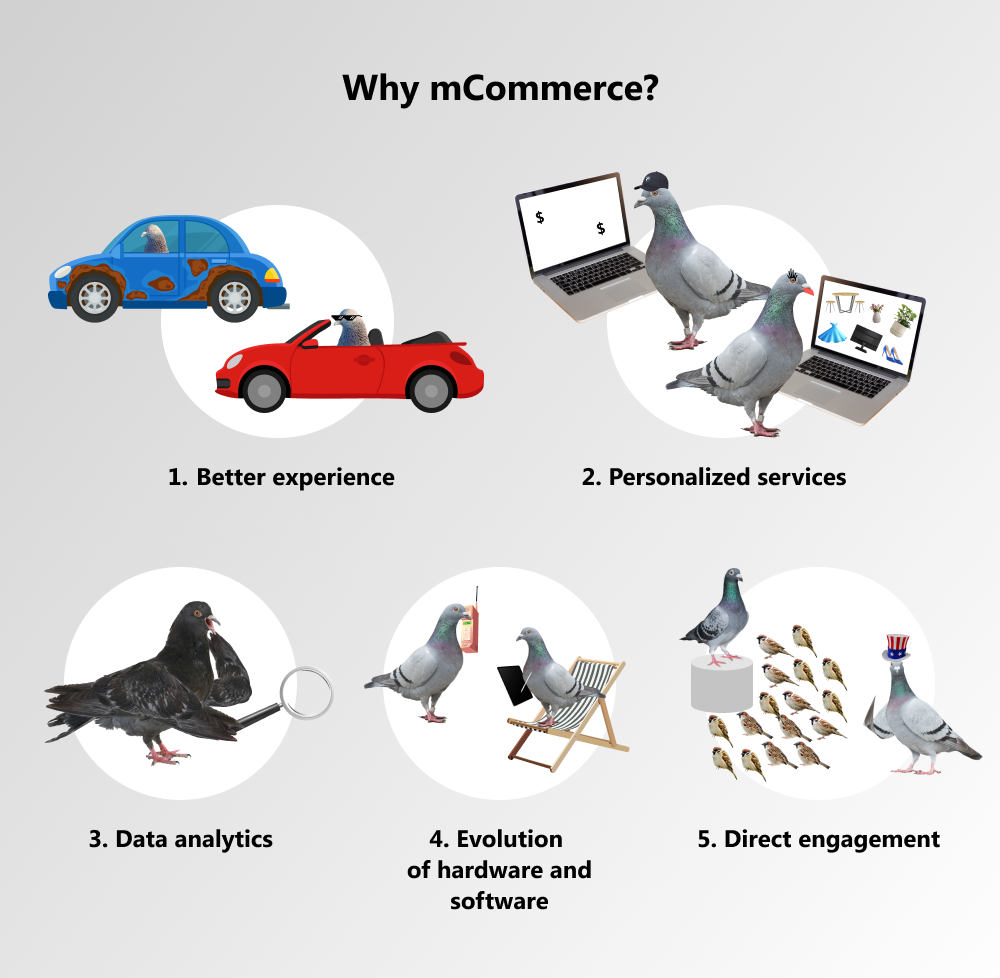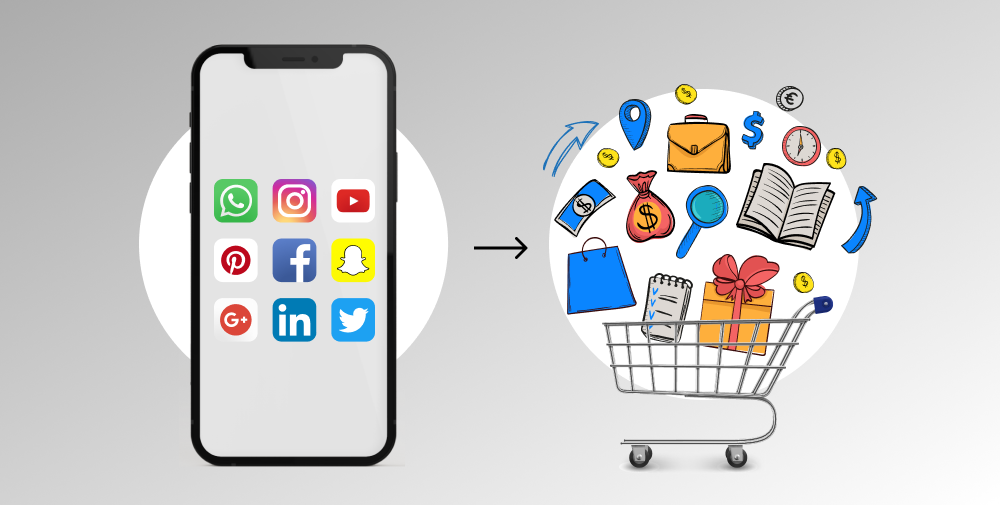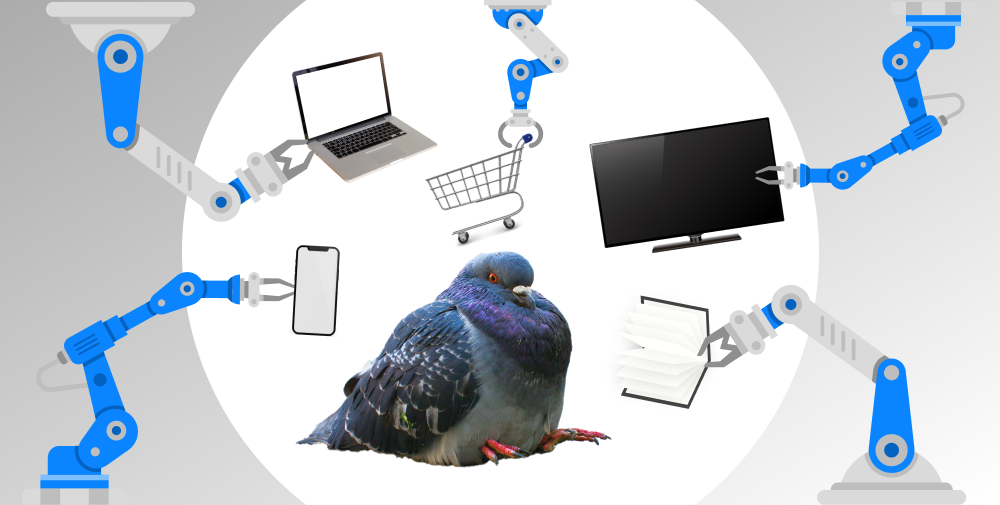mCommerce has experienced an immense increase in popularity in the last decade and especially in the year 2020, with the COVID-19 pandemic being the focus of our attention and forcing many businesses to bridge online and in-store experiences. And since the year of the rat is gone and we are still experiencing its consequences, let’s have a glimpse at what may await us in the foreseeable future of mobile commerce.
written by:
Alexander Arabey
Director of Business Development, Qulix Systems
mCommerce has experienced an immense increase in popularity in the last decade and especially in the year 2020, with the COVID-19 pandemic being the focus of our attention and forcing many businesses to bridge online and in-store experiences. And since the year of the rat is gone and we are still experiencing its consequences, let’s have a glimpse at what may await us in the foreseeable future of mobile commerce.
Contents
mCommerce Briefly Explained
We might as well proceed to looking into the future, but would like to be sure that we’re on the same page when it comes to the main topic of today.
You may have come across several variants of spelling this notion — mobile commerce, m commerce, m-commerce, mobile e-Commerce, and mCommerce — but surely they are the same. So what are they? mCommerce as such is any transaction involving money done on a mobile device of any type (smartphone, tablet, or wearable).
Do not mix it up with eCommerce, which emerged earlier and mainly relates to online shopping on desktops and via websites and web applications. mCommerce may be called the logical next phase of the latter, although both of them have many things in common.
Surely some services and industries owe their emergence to mobile commerce technologies and their vast business expansion. Here we should mention mobile banking, mobile marketing (loyalty cards, coupons, etc.), location-based services, digital content purchases, mobile boarding passes, mobile tickets, in-app payments, contactless payments, etc.
The successful future of mcommerce is well propped up by a bunch of statistical facts. For example, Statista shows that in 2021 we will see mobile commerce surpassing many more conventional ways of shopping, and it will be responsible for over 50% of the entire ecommerce sales volume. Invesp suggests that almost a third of all shopping decisions were impacted by looking for something online, mainly using mobile devices to look for the most suitable product or services. Rest assured, the mobile commerce growth is more than just impressive.
Why Does Business Choose to Invest into a Mobile Commerce App?
Let’s get down and look into the reasons why mobile commerce is a success in today’s world. Though we must warn that some advantages are rather obvious.
- Customer experience is way better if smartphone users are provided with a wide range of buying and selling possibilities online, let alone multiple payment options, with no need to visit conventional brick and mortar retailers. As long as users possess a mobile device, they may enjoy online shopping wherever there is the internet.
- With companies having entered into the era of keen competition, you may win several extra points by offering smartphone users a personalized shopping experience.
- Next comes data analytics. Using e-commerce apps on mobile devices allows you to follow patterns in online shopping and make adjustments to mobile commerce apps to make them more customized.
- Frankly, who doesn’t like it when our shopping experience takes considerably less time and way less effort? Thanks to ever-evolving hardware and software (e.g. augmented reality) you no longer even need to possess a physical credit card for online shopping or look for the right brick-and-mortar store, which is of special value during lockdown measures. Shop online, buy products on the mobile commerce market from the comfort of your home, and keep yourself and your family safe.
- Also, mobile devices are one of the best ways to directly engage with users via push notifications, attached social media accounts, and other e-commerce sales channels. Sometimes, no human has to have a look-in, since artificial intelligence can cope with many similar tasks.
These are just a few examples of the benefits you can gain from entering the mobile scene.
Welcome to the Fast-Growing World of Mobile Commerce!
After a brief summary of what mobile commerce is and why you may need it, now is the time to talk about the trends we currently witness.
1. Market share growth of mCommerce
Everybody likes comfort, you won't object to that. And what can be comfier for modern-day mobile users than to lie lazily on the sofa and go shopping with no need to stand up, make day-to-day payments via the beloved devices, or track a taxi on the screen of the smartphones? If businesses fail behind in adapting to the new reality and their customers' changing behavioral patterns, they will certainly lose some share of their audience and profits with it. The increase in the internet traffic coming from mobile devices compared to desktops promises great mobile commerce sales opportunities, so retailers should think about joining the mobile club in the short term.
2. Online shopping in Augmented Reality
Technological advancements have been considerably refined in recent years. Your mobile device may be top-of-the-class and full of apps for all types of mobile commerce but it is still unable to provide 100% experience of buying things in a real shop meaning that you cannot put clothes on real you before buying and feel how the textile touches your skin. For some, this may be a discouragement to proceed to the payment for the potential purchase.
However, there may be a high-tech solution to that in the form of augmented reality. Say, for example, you want to see how the sofa you really like will fit into the interior of your house. Using a picture taken on your mobile device, you upload it into the app, and after rendering it projects the selected piece of furniture onto a real-life environment. What is more, this is already happening with the app from IKEA, Sephora Virtual Artist, and some others. And the entire technology seems hugely promising.
3. Social media commerce
Instagram is a new marketplace. With the rise of shopping posts on this social network, only the blind won't see its immense potential for retailers. Apart from that, surveys suggest that this new-era way of buying is strongly favored by millennials who are pretty much inclined to shop on social media platforms (51% of 18–36-year-olds would do that). So the presence in social networks becomes a must as well as the smooth and intelligent integration of payment options.
4. Chatbots instead of human interaction
Here we come again to the issue of attracting millennials as your target audience. The overall trend for younger generations is to shift away from old-school phone calls or traditional emails to more engaging AI-powered text chats. When regarded in the perspective of the future of mobile commerce, chatbots can send personalized notifications, reminders, or special offers. In addition, this tool can boost the automation process of customer service and use data analytics to deliver a better experience to customers based on the data the mobile engine has accumulated.
5. Omnichannel approach
We do not question the statement that shopping apps are highly convenient and popular. However, it may often happen so that mobile devices are merely an entry point for a further shopping journey. The Harvard Business Review found out that only 7% of the respondents belonged to online-only customers, while 73% of them engaged multiple channels to buy products and make payments meaning that 73% of them prefer the omnichannel approach.
In this context, a mobile commerce app is an excellent tool to unite these channels and allow customers to enjoy their shopping via multiple online and offline channels. Selling touchpoints can be brick-and-mortar stores, online stores, online marketplaces (eBay), social media apps (Facebook, Instagram, etc.), and dedicated mobile apps.
You surely would like to beat your competitors and be present wherever your target audience may be. By going omnichannel, you provide your consumers with an excellent chance to spend money via platforms and services they are familiar with and use on a daily basis.
6. More information on mobile websites
The last (but surely not the least) tendency we would like to mention is that customers are becoming more demanding towards the content on mobile websites, namely, they desire to see more information and not be obliged to turn on their laptops to browse for more details.
No doubt that you shouldn't forget about user experience, and way too long mobile pages may discourage your customers to ever come back to your app and search for products elsewhere. To avoid this scenario, you may resort to accordion menus and dropdowns to design a mobile-friendly page and cut its length.
Final Take
All this is a mere cross-section of what is going on in the world right now. But with the number of new technologies constantly increasing and our life imminently changing, we may see a completely different picture in the near future. Last but not least, the Internet of Things and artificial intelligence are opening new doors for an even better customer experience with each new device coming into the market and with each mobile app developed.
However, we are assured that mobile services will be at the forefront of such changes, and those businesses willing to stay afloat in the post-pandemic times should think twice about adapting ASAP to the increasing demand of having mCommerce functionality literally at hand. The more engaging and smart it will be, the more are the chances its users will stay loyal to it and it won’t go forgotten.
Need a mobile commerce app? We may be the right choice for you, with all those years of expertise in the development of mobile financial apps. Do not hesitate to contact us directly or look through our official website for more info.

Contacts
Feel free to get in touch with us! Use this contact form for an ASAP response.
Call us at +44 151 528 8015
E-mail us at request@qulix.com











